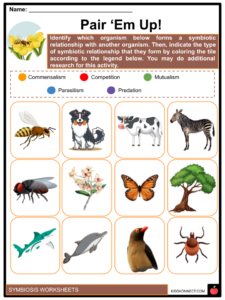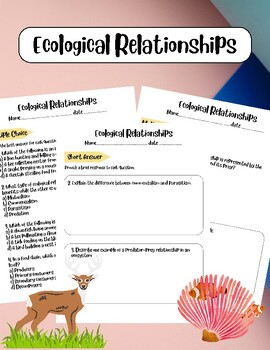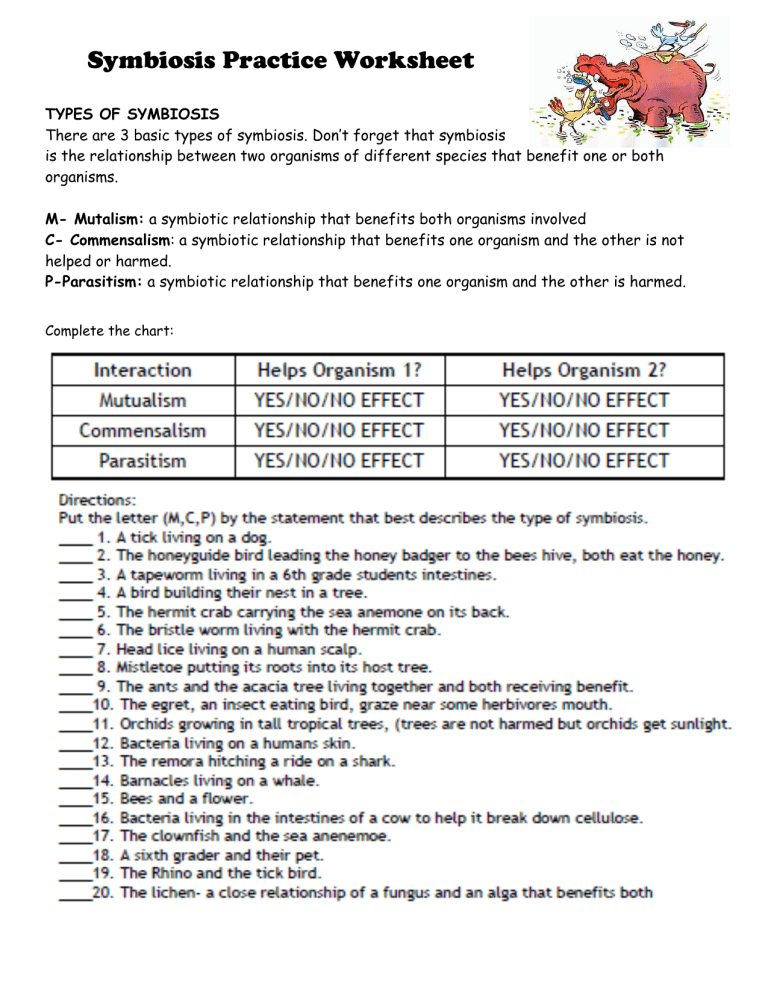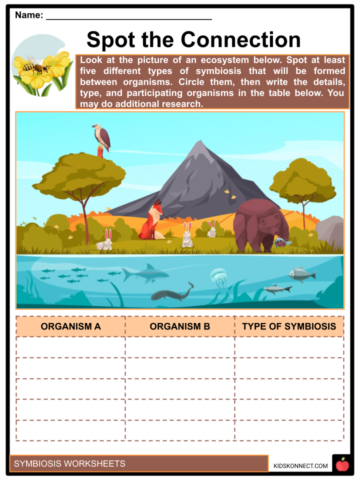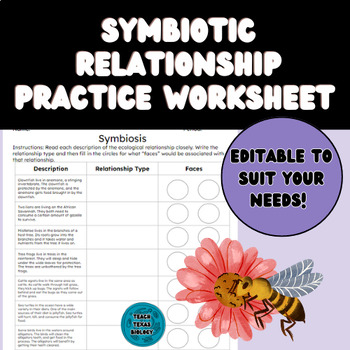Symbiosis is a crucial concept in ecology that describes the close and long-term interaction between different species. These interactions can take on various forms, such as mutualism, where both species benefit, or parasitism, where one species benefits at the expense of the other. Understanding symbiotic relationships is essential for understanding the intricate web of interactions that sustain ecosystems.
One common example of symbiosis is the relationship between bees and flowers. Bees rely on flowers for nectar as a food source, while flowers depend on bees for pollination. This mutualistic relationship benefits both species and is essential for the reproduction of many plant species. Without symbiotic relationships like this, ecosystems would not be able to function properly.
Symbiosis Practice Worksheet Ecological Interactions Symbiosis
Types of Symbiotic Relationships
There are three main types of symbiotic relationships: mutualism, commensalism, and parasitism. Mutualism is a type of symbiosis where both species benefit from the interaction. An example of mutualism is the relationship between clownfish and sea anemones. The clownfish receives protection from predators in the anemone’s tentacles, while the anemone benefits from the nutrients in the clownfish’s waste.
Commensalism is a type of symbiosis where one species benefits from the interaction, while the other is neither helped nor harmed. An example of commensalism is the relationship between barnacles and whales. Barnacles attach themselves to the whale’s skin and benefit from the whale’s movements, while the whale is unaffected by the barnacles.
Ecological Impact of Symbiotic Relationships
Symbiotic relationships play a crucial role in maintaining the balance of ecosystems. They can impact the population dynamics of species, influence nutrient cycling, and even shape the physical environment. For example, mycorrhizal fungi form mutualistic relationships with plant roots, helping plants absorb nutrients from the soil. This symbiotic relationship is essential for the health and growth of many plant species.
By studying symbiotic relationships, ecologists can gain a deeper understanding of how species interact and depend on each other within ecosystems. Symbiosis practice worksheets are a valuable tool for students to explore these concepts and learn about the intricate connections that sustain life on Earth.
Download Symbiosis Practice Worksheet Ecological Interactions Symbiosis
Ecological Interactions And Symbiosis Worksheet By Let Start To Learn
Symbiosis Practice Worksheet
Symbiosis Facts Worksheets Meaning Relationships
Ecological Symbiotic Relationship Practice Worksheet By Teach Texas Biology
